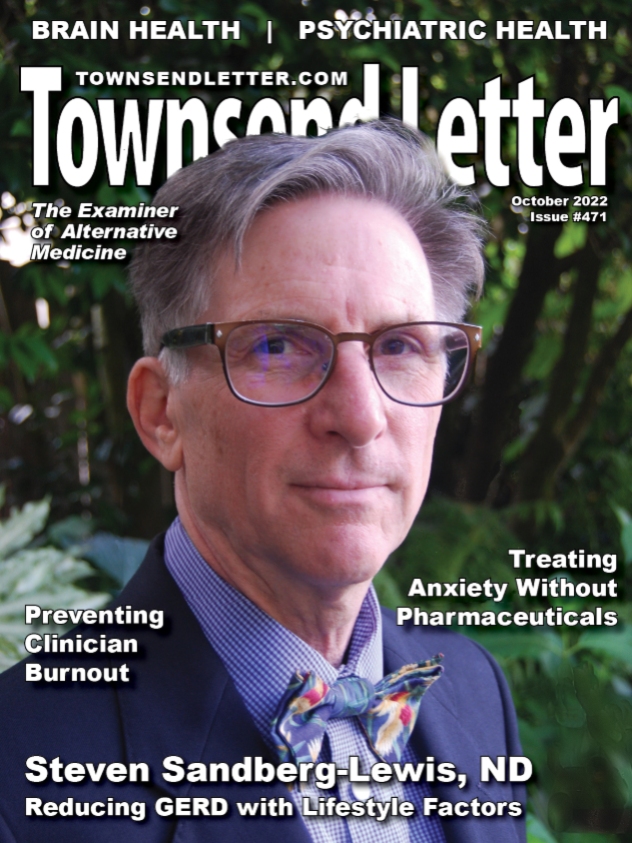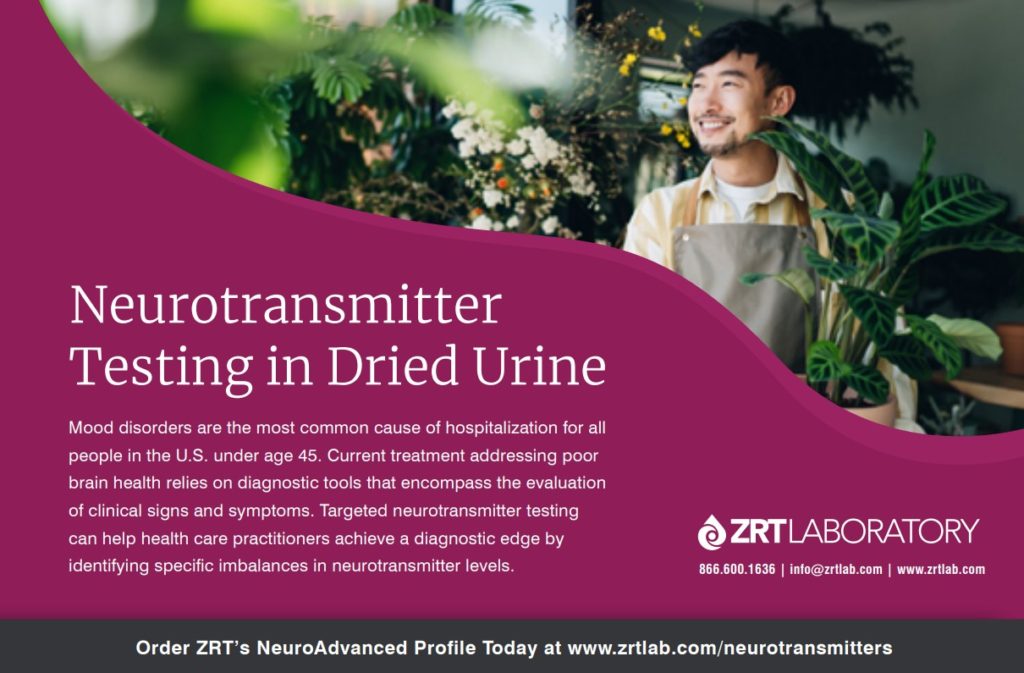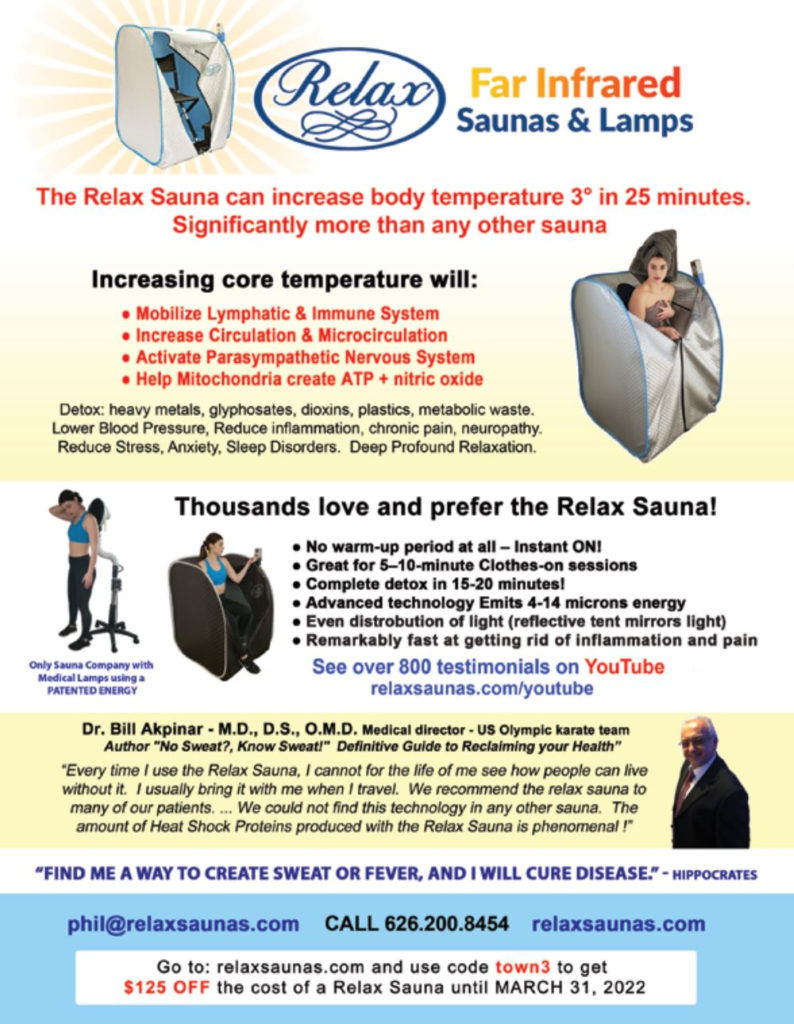By Andrew W. Campbell, MD
Your brain is who you are. Your brain makes your personality, your character, your ability to be happy and enjoy life, your emotions, your ability to learn and how quickly or slowly, your daily actions and reactions, how and what interests you, all of these and much more. Your brain’s health is essential to your well-being. Duly, your brain is well protected: it is the only organ almost completely surrounded by bone: the skull. No other organ is so guarded: not the heart, nor the kidneys, nor the liver. The weight of the brain is approximately 3 pounds, or about 2% of our body weight, yet consumes 30% of our glucose and 20% of our calories. There are 400 miles of blood vessels, mainly capillaries, to bring oxygen and nutrients to the 100 billion neurons that make up the brain.1,2 Each neuron has 1,000 synaptic connections. The visual cortex has 12,000 connections per neuron, and the prefrontal cortex, 80,000 synapses per neuron. This part of the brain is where executive functions take place, where we decide our long-term goals, plan for the future, develop our personality expressions and our social behavior, and control of certain parts of speech. It is where we determine between good and bad, future consequences of what we are currently doing.2-8 This part of the brain is missing in many politicians.
One of the most vital parts of the brain is the blood-brain barrier (BBB). It is a highly specialized brain endothelial structure. The BBB separates components of the blood from neurons. The BBB limits the entry of plasma components, red blood cells, and leukocytes into the brain. Approximately 98% of small molecule drugs and all large molecule neurotherapeutics, e.g., recombinant peptides, proteins, are normally excluded from the brain. The intact BBB is a major obstacle for the development of pharmaceutical drugs for central nervous system (CNS) disorders2.
According to the World Health Organization, diseases caused by mycotoxins are many and mycotoxins are known as the “Great Masquerader” of the 21st century due to their ability to present in patients a number of nonspecific clinical signs and symptoms and not routinely suspected by the medical establishment.9 Many patients get misdiagnosed with chronic Lyme disease, chronic fatigue syndrome, fibromyalgia, or eventually psychiatric disorders such as adjustment disorder, depression, and others.10
Mycotoxins are known to adversely affect the blood-brain barrier. Several mycotoxins, including satratoxin, T-2 toxin, gliotoxin, deoxynivalenol (DON), and ochratoxin, are known to be able to penetrate the intact BBB by altering permeability and induce oxidative stress responses, including reactive oxygen species (ROS) generation, lipid peroxidation, and protein carbonyl formation.11 DON directly affects brain neurons and glial cells after passing through the BBB and affects the vitality and function of astrocytes and microglia.12 DON induces neuronal cell apoptosis via mitochondrial apoptosis pathways. This mycotoxin induces inflammation of the central nervous system, increasing the expression of proinflammatory molecules. T-2 toxin is able to accumulate in the brain.12,14 Gliotoxin (GTX) is capable of injuring and killing microglial cells, astrocytes, and oligodendrocytes.15 Glutathione, a popular supplement used by many who treat mold- and mycotoxin-affected patients, is known to increase the toxicity of gliotoxin.15-17
The breaking down of the BBB, allowing mycotoxins into the brain, is linked to several diseases and disorders, such as autism spectrum disorder (ASD), multiple sclerosis (MS), Alzheimer’s disease (AD), and amyotrophic lateral sclerosis (ALS), better known as Lou Gehrig’s disease.1
The overwhelming medical and scientific evidence show that it is the brain and nervous tissues that are first affected by mycotoxins. Serum antibodies to mycotoxin antibodies bind to human tissue, including neural tissues such as myelin, triggering demyelination in the brain and peripheral nervous system. This demyelination includes sensory and motor neurons or both, as demonstrated in a study of 119 patients with confirmed exposure to molds and mycotoxins. All participants tested positive for serum antibodies to mycotoxins. The study concluded that all 119 patients tested positive for serum antibodies to mycotoxins and to neural tissues such as myelin.18
Studies from university medical centers, including some controlled studies, have shown a clear link between mycotoxins, including ochratoxin, and the effects on the brain leading up to ASD. In a study of 172 children with ASD and 61 controls, there were statistically significant differences comparing mycotoxin serum antibody levels between the two groups, with the ASD group showing elevated mycotoxins serum antibodies. In an ensuing study on ASD, these researchers linked ASD to ochratoxin A. In another study, Tufts University School of Medicine found evidence implicating mycotoxins in the pathogenesis of ASD. These included the secretion of pro-inflammatory cytokines from mast cells. They concluded: “…exposure to mold and mycotoxins can affect the nervous system, directly or through immune cell activation, thus contributing to neurodevelopmental disorders such as autism spectrum disorder.” A subsequent study by the same institution a year later confirmed these important and essential findings.19-22
Multiple sclerosis (MS) is one of the most frequent and severe demyelinating neurological diseases, mainly affecting young people, eventually leading to their becoming disabled. Initially, it was believed that the viruses or genetics were involved as causative agents. However, studies from Rutgers University Medical Center and others have demonstrated that gliotoxin is a common trigger of MS.23-25
In a study on AD, Bredesen found three subtypes of AD: type 1 (inflammatory), type 2 (non- inflammatory or atrophic), and type 3 (cortical). He reported that type 3 AD can be due as the result of exposure to mycotoxins.26 In a later study examining why Finland has the highest rate of dementia in the world, the authors linked factors such as the environment and a climate that is both very cold and humid. They found that this resulted in homes frequently harboring molds that produced neurotoxic mycotoxins.27 Other researchers found that the mycotoxins ochratoxin A (OTA) caused cell death due to loss of mitochondrial membrane potential, indicating that OTA is neurotoxic at very low concentrations and contributes to the development of AD and Parkinson’s disease. Another study showed the effects of OTA resulting in demyelination and neurodegenerative disorders. OTA also causes neurotoxicity through mitochondria-dependent cell death in brain astrocytes.28-30
The most common form of motor neuron disease in an adult is ALS. The well-known scientist from Cambridge University, Dr. Stephen Hawkins, suffered from this devastating disease. ALS is a progressive and fatal disease, with 5-10% being linked to genetic mutations. Patients suffer a progressive loss of motor neurons in the brain stem and spinal cord, resulting in muscle weakness, twitching, muscle wasting, cramps and stiffness of arms and/or legs, problems with speech and/or swallowing or breathing. Neuroinflammation is commonly found in the majority of ALS patients. A recent review study showed how mycotoxins significantly increase glutamate production, stimulating TDP-43 translocation, and provide a link between mycotoxins and one of the molecular and histologic hallmarks of sporadic ALS.31 Another study showed how the mycotoxin verrucarin increased the spontaneous release of glutamate by 1300%.32,33
Brain-related symptoms are many and varied. A good review of these is in the chapter “Mold and Mycotoxins: Effects on the Neurological and Immune Systems in Humans.”18 That same chapter gives which testing methods were found to be most accurate, namely serum antibody testing for mycotoxins and also molds, use of nerve conduction velocities for detecting demyelination, and the use of serum testing for antibodies to myelin and other nerve tissues. Several recent studies link chronic fatigue syndrome, fibromyalgia, postural orthostatic tachycardia syndrome (POTS), dysautonomia, and others to the exposure to mycotoxins.34 These are due to the effects of mycotoxins on the brain.
In addressing some misconceptions, studies have shown that OTA levels in urine are found in healthy persons worldwide and represent the mycotoxins from foods consumed that day. Indeed, another study showed that urine samples show day-to-day variations in mycotoxin intake. Additionally, while urinary excretion normally indicates recent mycotoxin intake from food, serum measurements indicate exposure to mycotoxins from an indoor mold growth environment.35,36 The majority of the studies discussed above used serum antibody testing for mycotoxins and mold issues in patients.
Lastly, in reading this publication, we can see that mycotoxins, by causing dysregulation of mitochondria via various effects, cause cell death. It is therefore clear that cells, including fat cells, cannot store mycotoxins for these reasons.
In treating patients suffering from the effects of molds and mycotoxins, it is vital to follow the first rule of toxicology: get the patient away from the toxin or the toxin away from the patient. This is probably the most difficult part as testing a home or workplace for molds is not standardized in the United States: different companies will give different readings for the same indoor space. Treatment must be individualized: one cannot give the same treatment to a 22-year-old woman weighing 110 pounds and to a 55-year-old man weighing 220 pounds. There are several published studies and textbook chapters that clearly demonstrate the best treatments for the different diseases and disorders caused by molds and mycotoxins. The basic principle of identifying the cause, then removing the cause, and finally repairing the damage holds as the best way to proceed.
References
- Campbell AW, Decena K. The Brain and Mycotoxins. Altern Ther Health Med. 2020 Nov; 26(6) 8-11.
- Zlokovic, Berislav V. The blood-brain barrier in health and chronic neurodegenerative disorders. Neuron vol. 57,2 (2008): 178-201.
- Elisabeth Murray, Steven Wise, Kim Grahatle. Chapter 1: The History of Memory Systems.” In: The Evolution of Memory Systems: Ancestors, Anatomy, and Adaptations (1st ed.). Oxford University Press. 2016;pp. 22–24.
- Miller EK, Freedman DJ, Wallis JD (August 2002). The prefrontal cortex: categories, concepts and cognition. Philosophical Transactions of the Royal Society of London. Series B, Biological Sciences. 357 (1424): 1123–36.
- DeYoung CG, et al. (June 2010). Testing predictions from personality neuroscience. Brain structure and the big five. Psychological Science. June 2010;21 (6): 820–8.
- Yang Y, Raine A (November 2009). Prefrontal structural and functional brain imaging findings in antisocial, violent, and psychopathic individuals: a meta-analysis. Psychiatry Research. 174 (2): 81–8.
- Gabrieli JD, Poldrack RA, Desmond JE (February 1998). The role of left prefrontal cortex in language and memory. Proceedings of the National Academy of Sciences of the United States of America. 95 (3): 906–13.
- Baldauf, D.; Desimone, R. (2014-04-25). Neural Mechanisms of Object-Based Attention. Science. 344 (6182): 424–427.
- Mycotoxins – World Health Organization www.who.int\ceh\capacity\mycotoxins
- Campbell, AW. Lyme Disease and Mycotoxicosis: How to Differentiate Between the Two. Altern Ther Health Med. 2019 Jul;25(4):8-10.
- Nguyen, Vu Thu Thuy et al. The role of mycotoxins in neurodegenerative diseases: current state of the art and future perspectives of research. Biological chemistry vol. 403,1 3-26. 27 Aug. 2021.
- Zhang, Jiajia et al. The neurotoxicity of trichothecenes T-2 toxin and deoxynivalenol (DON): Current status and future perspectives. Food and chemical toxicology : an international journal published for the British Industrial Biological Research Association vol. 145 (2020): 111676.
- Park, Sunwoo et al. Ochratoxin A exerts neurotoxicity in human astrocytes through mitochondria-dependent apoptosis and intracellular calcium overload. Toxicology letters vol. 313 (2019): 42-49.
- Dai, Chongshan et al. T-2 toxin neurotoxicity: role of oxidative stress and mitochondrial dysfunction. Archives of toxicology vol. 93,11 (2019): 3041-3056.
- Fraga-Silva TFC, Mimura LAN, Leite LCT, Borim PA, Ishikawa LLW, Venturini J, Arruda MSP, Sartori A. Gliotoxin Aggravates Experimental Autoimmune Encephalomyelitis by Triggering Neuroinflammation. Toxins (Basel). 2019 Jul 26;11(8):443.
- Axelsson, V et al. Glutathione intensifies gliotoxin-induced cytotoxicity in human neuroblastoma SH-SY5Y cells. Cell biology and toxicology vol. 22,2 (2006): 127-36.
- Axelsson, V et al. Gliotoxin induces caspase-dependent neurite degeneration and calpain-mediated general cytotoxicity in differentiated human neuroblastoma SH-SY5Y cells. Biochemical and biophysical research communications vol. 345,3 (2006): 1068-74.
- Campbell AW.; Thrasher JD.; Gray MR.; Vojdani A.: Chapter: “Mold and Mycotoxins: Effects on the Neurological and Immune Systems in Humans.” Adv Appl Microbiol (Volume 55). David C. Straus., (ed.), Published by Elsevier Inc., 2004.
- De Santis B, Raggi ME, Moretti G, et al. Study on the Association among Mycotoxins and other Variables in Children with Autism. Toxins (Basel). 2017;9(7):203. Published 2017 Jun 29.
- De Santis B, Brera C, Mezzelani A, et al. Role of mycotoxins in the pathobiology of autism: A first evidence. Nutr Neurosci. 2019;22(2):132-144.
- Ratnaseelan AM, Tsilioni I, Theoharides TC. Effects of Mycotoxins on Neuropsychiatric Symptoms and Immune Processes. Clin Ther. 2018;40(6):903-917.
- Theoharides TC, Kavalioti M, Martinotti R. Factors adversely influencing neuro-development. J Biol Regul Homeost Agents. 2019;33(6):1663-1667.
- Campbell AW.: Autoimmunity and the Gut. Autoimmune Diseases; (2014), Special Issue: Environmental Triggers and Autoimmunity; Autoimmune Dis. 2014:152428.
- Purzycki CB, Shain DH. Fungal toxins and multiple sclerosis: a compelling connection. Brain Res Bull. 2010;82(1-2):4-6.
- Ménard A, Amouri R, et al. A gliotoxic factor and multiple sclerosis. J Neurol Sci. 1998 Feb 5;154(2):209-21.
- Bredesen DE. Inhalational Alzheimer’s disease: an unrecognized – and treatable – epidemic. Aging (Albany NY). 2016;8(2):304-313.
- Eiser AR. Why does Finland have the highest dementia mortality rate? Environmental factors may be generalizable. Brain Res. 2017;1671:14-17.
- Zhang X, et al. Ochratoxin A induces apoptosis in neuronal cells. Genes Nutr. 2009;4(1):41-48.
- von Tobel JS, et al. Repeated exposure to Ochratoxin A generates a neuroinflammatory response, characterized by neurodegenerative M1 microglial phenotype. Neurotoxicology. 2014;44:61-70.
- Park S, Lim W, You S, Song G. Ochratoxin A exerts neurotoxicity in human astrocytes through mitochondria-dependent apoptosis and intracellular calcium overload. Toxicol Lett. 2019;313:42-49.
- French, Peter W et al. Fungal Neurotoxins and Sporadic Amyotrophic Lateral Sclerosis. Neurotoxicity research vol. 35,4 (2019): 969-980.
- French PW, Ludowyke R, Guillemin GJ. Fungal Neurotoxins and Sporadic Amyotrophic Lateral Sclerosis. Neurotox Res. 2019;35(4):969-980.
- Bradford, H F et al. Changes in transmitter release patterns in vitro induced by tremorgenic mycotoxins. Journal of environmental pathology, toxicology and oncology: official organ of the International Society for Environmental Toxicology and Cancer vol. 10,1-2 (1990): 17-30.
- Tuuminen T, et al. Dysregulation of the Autonomous Nervous System in Patients with Advanced Sick Building Syndrome. J Otolaryngol Neurotol Res, 2021;4(1): 97-111.
- Alvito, Paula, and Luís Pereira-da-Silva. Mycotoxin Exposure during the First 1000 Days of Life and Its Impact on Children’s Health: A Clinical Overview. Toxins vol. 14,3 189. 4 Mar. 2022,
- Peraica, Maja et al. Mycotoxicoses in children. Arhiv za higijenu rada i toksikologiju vol. 65,4 (2014): 347-63.
Andrew W. Campbell, MD, is Editor-in-Chief of Alternative Therapies in Health and Medicine, Advances in Mind-Body Medicine, and Microbiology Research.













